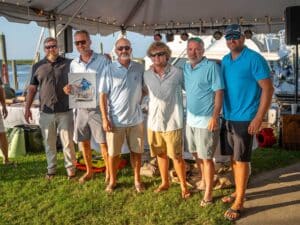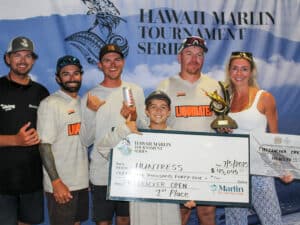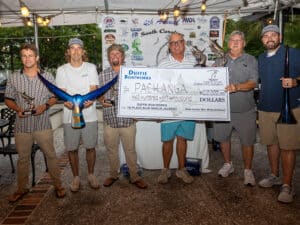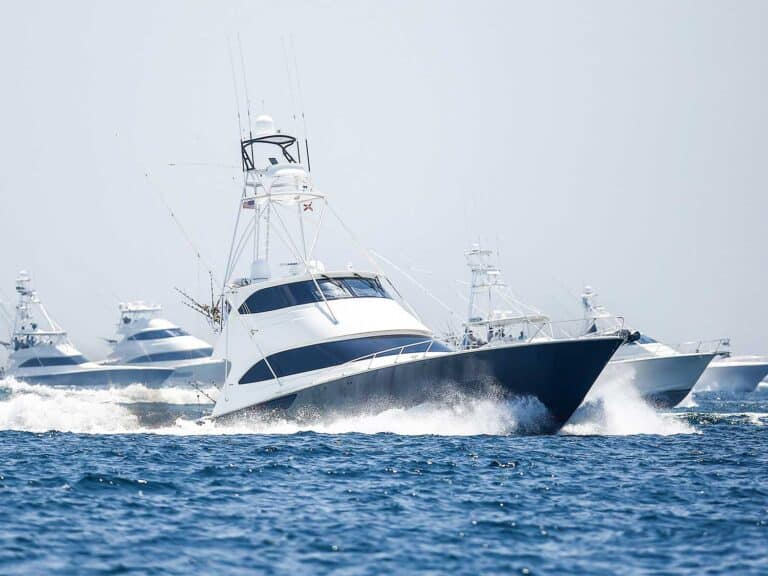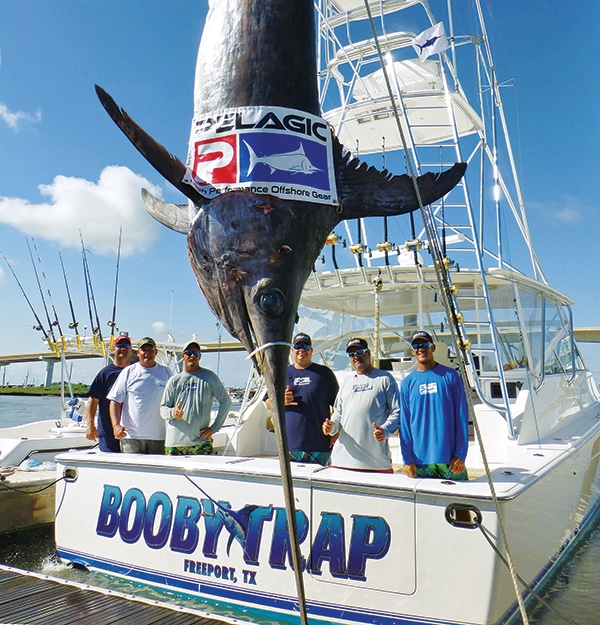
AmendMP
There seems to be no limit to how many bad ideas the National Marine Fisheries Service can come up with. The proposed Amendment 8 to the swordfish management plan is just the latest example.
What NMFS perceives as a big problem now — that swordfish stocks have increased to healthy levels — is not a problem at all in the minds of many anglers. As NMFS sees it, the the United States is not killing enough swordfish. Commercial fishermen have not met the U.S. portion of the international quota for swordfish landings. The thing that seems to terrify NMFS and the commercial longline industry the most is that the unused U.S. quota may be assigned to other countries. By the way, about 30 percent of the annual U.S. quota, which was not landed, has already been given to other nations. Does that make sense? It does to NMFS and the commercial industry. It also has some support in the sport-fishing community.
The supposed logic behind not wanting other countries to receive the unused U.S. quota is that other longline fleets are not as conservative as the U.S. longline fleet. Keep in mind that pelagic longline gear is one of the most environmentally destructive kinds of commercial fishing gear in terms of bycatch. Only bottom longlines, bottom trawls and dynamite are worse.
I am disappointed that some conservation and environmental groups have bought into this logic. They feel that if other nations are assigned part of the U.S. quota, their bycatch will be worse than our bycatch. These groups fail to see that the relative amount of bycatch is not the problem; it’s just a symptom of the real problem, which is longlining itself. Instead of working to protect the U.S. swordfish quota, over 90 percent of which is caught on longlines, everyone should be working to eliminate pelagic longlining from the oceans.
Step one is to phase out all longlining in U.S. waters. This has been done in the Bahamas with outstanding results.
Step two is to put pressure on other countries to phase out their destructive longlining as well. How do you apply effective pressure on others? Stop importing marine products from any country that doesn’t have an effective plan to shift from longlines to other types of gear with little or no bycatch.
Some of NMFS’s Great Ideas
So what great plans has NMFS proposed to make sure that the U.S. swordfish quota is reached? One idea is to let any recreational angler buy a commercial swordfish permit for about $20. The average dressed-weight size of a swordfish is 96 pounds. The average price for swordfish is $4.51 per pound. That equates to about $433 for each swordfish sold. Certainly that is enough to lure thousands of recreational anglers into buying a cheap permit. Of course, increased commercial landings would no doubt lead to lower prices, but the temptation would certainly remain.
NMFS has no idea how many new permits would be sold, and the demand could easily become unmanageable. As a comparison, there are about 4,100 general category tuna permits. Can you imagine 4,000 new commercial swordfish vessels operating off Florida’s lower east coast? The new permits, as proposed, would include rod and reel, hand lines, bandit gear (electric reels), harpoons and green sticks.
NMFS has also proposed a complex system of regional management areas with varying swordfish quotas for each region. Why it is proposing quotas on hand gear when it wants to increase landings remains unclear. In some cases, the proposed hand-gear quota would be one swordfish. Another option that NMFS is considering is to allow charter and head boats to sell their swordfish catch when not carrying passengers for hire. This is just another proposal to separate charter boats from the recreational industry, which can reduce the already small recreational quotas on some species.
Recreational Push Back
As you might imagine, the reaction from the sport-fishing community to the proposed $20 commercial permit was strongly negative. For one thing, if some so-called recreational anglers are already selling their swordfish illegally, they probably wouldn’t buy a permit anyway. A permit would require upgrading their vessels to commercial standards.
The current rule requires sport anglers to report any swordfish they land to NMFS within 24 hours. In this way, NMFS can account for all recreational landings. However, NMFS suspects a significant but unknown number of swordfish go unreported.
Sport fishers who like to target swordfish are mostly opposed to the proposed amendment. They feel that with the $20 permit a large number of private boats would stop releasing swords that are potentially worth an average of $433 and may increase their efforts and stay out longer to catch the money fish.
The bureaucrats in Washington have outdone themselves this time with Amendment 8, all in a desperate effort to protect a swordfish quota that hasn’t been reached in many years in spite of a fishery that has been rebuilt and is in healthy condition.
My message to NMFS is to stop protecting the destructive longline industry. The mission of NMFS is to protect our marine resources. In this it has failed. Marlin, sharks and tuna are all greatly overfished and depleted, and longlines are a major cause of their depletion. Why should NMFS do anything to help this destructive gear type?
There are numerous options being considered in Amendment 8, all of which aim to kill more swordfish. I don’t have a problem with increasing swordfish landings within the U.S. quota on gear that has little or no bycatch. I do have a problem with longlines and their huge bycatch of the species that many of us consider the most important. Everyone in the sport-fishing, conservation and environmental communities needs to work together to see that longlines are phased out.
Of all the options discussed in Amendment 8, my favorite is to “maintain the status quo.” In other words, Amendment 8 should be tabled. Then we can get to work on the real problem: longlines.
This will be my last Conservation column for Marlin magazine. It has been a pleasure to write about issues important to big-game anglers for the past 15 years. I have tried to make readers aware of fishery management problems, so hopefully you will become more involved. I hope to see you on the water.
